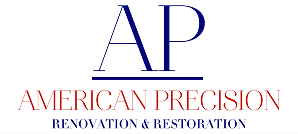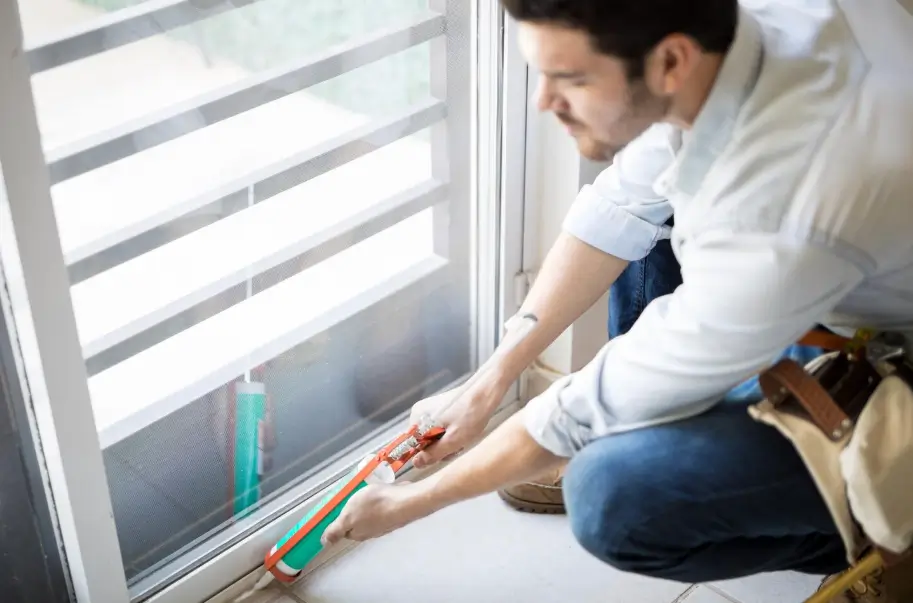Window replacement decisions involve weighing DIY cost savings against professional expertise, quality assurance, and long-term performance benefits. While DIY projects eliminate labor costs, window installation requires specialized knowledge, tools, and techniques that significantly affect results. Understanding the trade-offs between DIY and professional approaches helps homeowners make informed decisions that balance cost considerations with quality expectations and project complexity.
The complexity of modern window replacement extends far beyond simple measurements and installation. Proper window replacement involves weatherization, structural considerations, building code compliance, and warranty requirements that professional installers understand intimately. These technical aspects often determine long-term success more than basic installation skills.
Technical Complexity & Skill Requirements
Window replacement involves multiple technical challenges that require specialized knowledge and experience to address properly. Understanding these complexity factors helps homeowners evaluate their capabilities realistically while recognizing when professional expertise becomes necessary.
Measurement accuracy determines window fit and performance significantly. Professional installers understand how to measure for various window types while accounting for structural settling, out-of-square openings, and thermal expansion factors that DIY installers often overlook.
Structural assessment capabilities separate professional installers from amateurs when load-bearing considerations, header requirements, or framing modifications become necessary. Professionals understand when structural engineers need consultation for safe window replacements.
Weatherization expertise ensures proper moisture barriers, insulation installation, and air sealing that prevent energy loss and moisture infiltration. These critical details affect long-term performance but require knowledge that most homeowners lack.
Code compliance knowledge helps professional installers ensure installations meet local building requirements for safety, energy efficiency, and legal compliance. DIY installers often overlook code requirements that can create problems during home sales or inspections.
Tool requirements for professional window installation include specialized equipment for lifting, aligning, and securing windows that most homeowners don’t possess. Quality installation often requires tools that cost more than hiring professionals for single projects.
Safety considerations increase significantly for second-story windows, heavy units, or challenging access situations. Professional installers have safety training, equipment, and insurance coverage that protect against accidents and liability claims.
Cost Analysis & Budget Considerations
While DIY approaches eliminate labor costs, total project costs involve multiple factors including tools, materials, time investment, and potential mistake correction that often make professional installation more economical than initial comparisons suggest.
Labor cost elimination represents the primary DIY advantage, typically saving 30-50% of total project costs. However, these savings assume successful completion without mistakes that require professional correction.
Tool and equipment costs for DIY window installation can exceed $300-800 for quality tools needed for proper installation. These tools often have limited future use, reducing their value proposition for single projects.
Material waste in DIY projects typically runs 10-20% higher than professional installations due to measurement mistakes, damage during handling, or ordering errors. Professional installers minimize waste through experience and supplier relationships.
Time investment for DIY window replacement often exceeds 8-16 hours per window for inexperienced installers compared to 2-4 hours for professionals. This time commitment represents significant opportunity costs for most homeowners.
Mistake correction costs can exceed professional installation prices when improper installation causes water damage, structural problems, or requires complete reinstallation. Professional work includes warranties that cover these risks.
Permit and inspection costs remain the same regardless of installation method, but DIY work often requires additional inspections or corrections that professionals avoid through code-compliant initial installation.
Quality & Performance Differences
Installation quality significantly affects window performance, longevity, and energy efficiency. Professional installers achieve consistently superior results through experience, proper techniques, and quality control measures that DIY projects rarely match.
Weatherization quality determines long-term energy performance and moisture protection. Professional installers understand vapor barrier placement, insulation techniques, and air sealing methods that prevent problems DIY installations often experience.
Operational performance including smooth operation, proper locking, and long-term reliability depends on precise installation techniques that professionals master through repetition. DIY installations often result in windows that bind, leak, or operate poorly.
Aesthetic results including trim work, caulking, and overall finish quality typically favor professional installations. These details significantly affect home appearance and perceived value while requiring skills most homeowners haven’t developed.
Structural integrity ensures windows remain secure and perform properly over decades of use. Professional installers understand fastening requirements, load distribution, and structural details that DIY installers often compromise.
Energy efficiency performance depends on proper installation techniques that eliminate thermal bridging, air infiltration, and moisture problems. Professional installations typically achieve better energy performance than DIY alternatives.
Warranty coverage often requires professional installation to maintain validity. Many window manufacturers void warranties for DIY installations, eliminating important protection for product defects or performance problems.
Project Complexity Factors
Window replacement complexity varies dramatically based on specific project characteristics. Simple replacements in good openings differ significantly from projects requiring structural modifications, custom sizing, or challenging access conditions.
Opening condition assessment determines project complexity significantly. Windows in square, properly sized openings with good framing represent straightforward replacements, while projects requiring structural repairs or modifications exceed most DIY capabilities.
Window type variations affect installation difficulty substantially. Standard double-hung replacements in existing openings are relatively straightforward, while bay windows, skylights, or architectural specialty windows require professional expertise.
Accessibility challenges including second-story installations, limited workspace, or difficult material handling often require professional equipment and techniques that homeowners cannot safely manage.
Integration complexity with existing trim, siding, or architectural details requires experience and skills that professional installers develop through diverse project exposure. DIY projects often compromise these integration details.
Multi-window coordination in whole-house replacement projects requires project management skills, scheduling coordination, and quality consistency that professional contractors provide more effectively than DIY approaches.
Special requirements including historic preservation compliance, energy efficiency certifications, or architectural review approvals often require professional documentation and expertise that DIY projects cannot provide.
Warranty & Insurance Considerations
Professional window installation provides warranty protection and insurance coverage that DIY projects cannot match. These protections often justify professional installation costs through risk mitigation and long-term performance assurance.
Installation warranties from professional contractors cover workmanship defects and installation problems for typically 1-5 years after completion. These warranties provide recourse if problems develop that DIY installations cannot offer.
Manufacturer warranty validity often requires professional installation to maintain coverage. DIY installations frequently void product warranties that provide important protection against material defects or premature failure.
Insurance coverage through professional contractors protects homeowners from liability claims for worker injuries or property damage during installation. DIY projects leave homeowners exposed to significant liability risks.
Building code compliance documentation provided by professional installers supports home values and prevents complications during future sales. DIY work often lacks proper documentation that can create problems later.
Performance guarantees from professional installers ensure windows achieve expected energy efficiency and operational performance. These guarantees provide recourse if installations don’t meet promised specifications.
Damage protection during installation is covered by professional contractor insurance while DIY projects leave homeowners responsible for any damage to property, furnishings, or surrounding materials.
Long-Term Performance & Maintenance
Professional installation typically provides better long-term performance through proper techniques, quality materials, and attention to details that affect durability and maintenance requirements over window lifespans.
Moisture management through proper flashing, vapor barriers, and drainage details prevents long-term problems that can cause structural damage and costly repairs. Professional installers understand these critical weatherization details.
Energy performance optimization requires installation techniques that eliminate thermal bridging, air infiltration, and insulation gaps. Professional installations typically achieve better energy performance that provides ongoing utility cost savings.
Operational longevity depends on proper installation alignment, hardware adjustment, and structural support that professional installers provide consistently. DIY installations often develop operational problems that require professional correction.
Maintenance requirements typically remain lower for professionally installed windows due to proper weatherization, alignment, and integration details that prevent premature wear and performance degradation.
Failure risk reduction results from professional installation techniques that prevent common problems including water infiltration, structural settling damage, and operational failures that DIY installations experience more frequently.
Future serviceability considers access requirements, parts availability, and service procedures that professional installers understand and plan for during installation. DIY projects often overlook these future considerations.
Decision Framework & Recommendations
Choosing between DIY and professional window replacement requires honest assessment of skills, available time, project complexity, and risk tolerance. Most homeowners benefit from professional installation despite higher upfront costs.
Skill assessment should consider not just basic construction abilities but specific window installation experience, tool availability, and safety considerations. Window installation requires specialized skills that differ from general carpentry work.
Project scope evaluation helps determine when professional installation becomes necessary. Single window replacements in good openings might be DIY candidates, while multiple windows or complex situations require professional expertise.
Risk tolerance considerations include potential costs of mistakes, liability exposure, warranty implications, and long-term performance risks that DIY installations create compared to professional alternatives.
Budget analysis should include all costs including tools, materials, time investment, permit fees, and potential mistake correction costs that often make professional installation more economical than initial comparisons suggest.
Quality expectations affect decision-making significantly. Homeowners seeking maximum performance, longevity, and aesthetic results typically find professional installation provides better value despite higher upfront costs.
While DIY window replacement can save money in ideal situations, most homeowners benefit from professional installation that provides superior results, warranty protection, and peace of mind. The technical complexity, safety requirements, and long-term performance implications of window replacement generally justify professional installation costs through better outcomes and reduced risks. Careful evaluation of specific project requirements and realistic assessment of DIY capabilities helps homeowners make informed decisions that balance cost considerations with quality expectations and long-term satisfaction.

